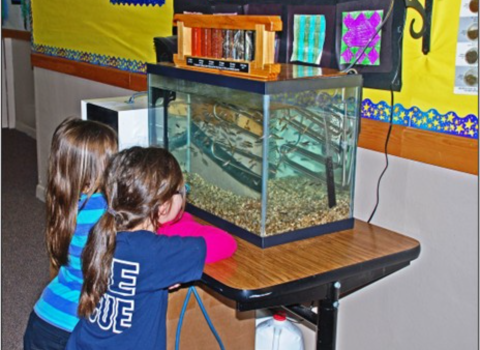Tests by the U.S. Geological Survey in Seattle have confirmed that Atlantic salmon broodstock broodstock
The reproductively mature adults in a population that breed (or spawn) and produce more individuals (offspring or progeny).
Learn more about broodstock used in the Connecticut Migratory Fish Restoration Program have tested positive for a viral disease that was detected in Massachusetts earlier this month.
Dr. Jaime Geiger announced that 718,000 eggs were destroyed at the White River National Fish Hatchery, in Bethel, Vt. The eggs were collected in the past month from wild salmon, known as "sea-run" salmon, at the Cronin National Salmon Station in Sunderland, Mass., where infectious pancreatic necrosis was discovered in two fish on Nov. 16.
Scientists believe the salmon tested at the Cronin station may have picked up the virus in the Atlantic Ocean.
The eggs represent less than seven percent of the fish to be stocked in the Connecticut River drainage in the coming year, according to Geiger, Assistant Regional Director for Fisheries Resources for the Northeast Region of the U.S. Fish and Wildlife Service. Confirmation of the viral disease has also resulted in the loss of broodstock and other fish at the Cronin station because facilities must be disinfected to enable egg production next year.
No other eggs or fish at the White River hatchery were affected by the incident, Geiger said.
The eggs were to be raised at the White River hatchery and released as young salmon, known as fry, in the river and its tributaries in New Hampshire, Vermont, Massachusetts, and Connecticut.
The decision to act in response to the virus was made earlier by the Connecticut River Atlantic Salmon Commission.
"The commission took these steps to meet our responsibilities to protect the Atlantic salmon of the Connecticut River and other New England streams," Geiger said. The commission, of which the Fish and Wildlife Service is a member, oversees the salmon restoration program in the Connecticut River drainage.
Geiger stressed that the programs overall restoration goals will not be compromised by the loss of a portion of egg production this year. He did, however, caution that the appearance of IPN reiterates the importance of continued improvements to quarantine and isolation capabilities to safeguard the overall Atlantic salmon program.
Salmon and trout can contract the virus through contact in the wild. IPN is not dangerous to humans.
"IPN is difficult to detect in salmon and trout and is highly contagious," said Geiger. "Once it infects young fish it can spread quickly. Fish and Wildlife Service pathologists were able to find it thanks to a comprehensive monitoring program used at the Services Atlantic salmon production facilities, including the Cronin station. As a result, weve halted its spread before the collected eggs were hatched."
The incident is the first time that IPN has been detected at the Cronin station. The station was built in 1982 and the restoration program began operation in that year.
"We regret that these fish have been lost," said Eric Palmer, Vermont Fish and Wildlife Department Director of Fisheries, "but its essential that we halt spread of the virus to other facilities, both within and outside the Connecticut River drainage. Had we not caught this incident in time, the disease could have spread to other salmon that are critical to a successful restoration effort."
"Scientists plan to conduct additional tests of the broodstock that will help managers put measures in place to further minimize the impacts of the virus in fish returning to the Connecticut River from the ocean," Geiger said.
"The commission has set up procedures that proved successful in identifying and isolating such viruses once detected," said Ed Parker, Chief, Bureau of Natural Resources, Connecticut Department of Environmental Protection and chairman of the commission. "While this event has been a short-term setback to the restoration program, we are pleased that the virus was contained at the station. We remain committed to bringing the Atlantic salmon back to the river and its tributaries."
The Connecticut River Migratory Fish Restoration Program is a cooperative effort guided by the Connecticut River Atlantic Salmon Commission. Members include the Connecticut Department of Environmental Protection, Massachusetts Division of Fish and Wildlife, New Hampshire Department of Fish and Game, Vermont Department of Fish and Wildlife, and U.S. Fish and Wildlife Service, National Marine Fisheries Service, U.S. Forest Service. For information on the restoration program, go to http://www.fws.gov/r5crc.
The U.S. Fish and Wildlife Service is the principal federal agency responsible for conserving, protecting and enhancing fish, wildlife and plants and their habitats for the continuing benefit of the American people. Visit the Services Web sites at target_newhttp://www.fws.gov and http://www.fws.gov/northeast.


